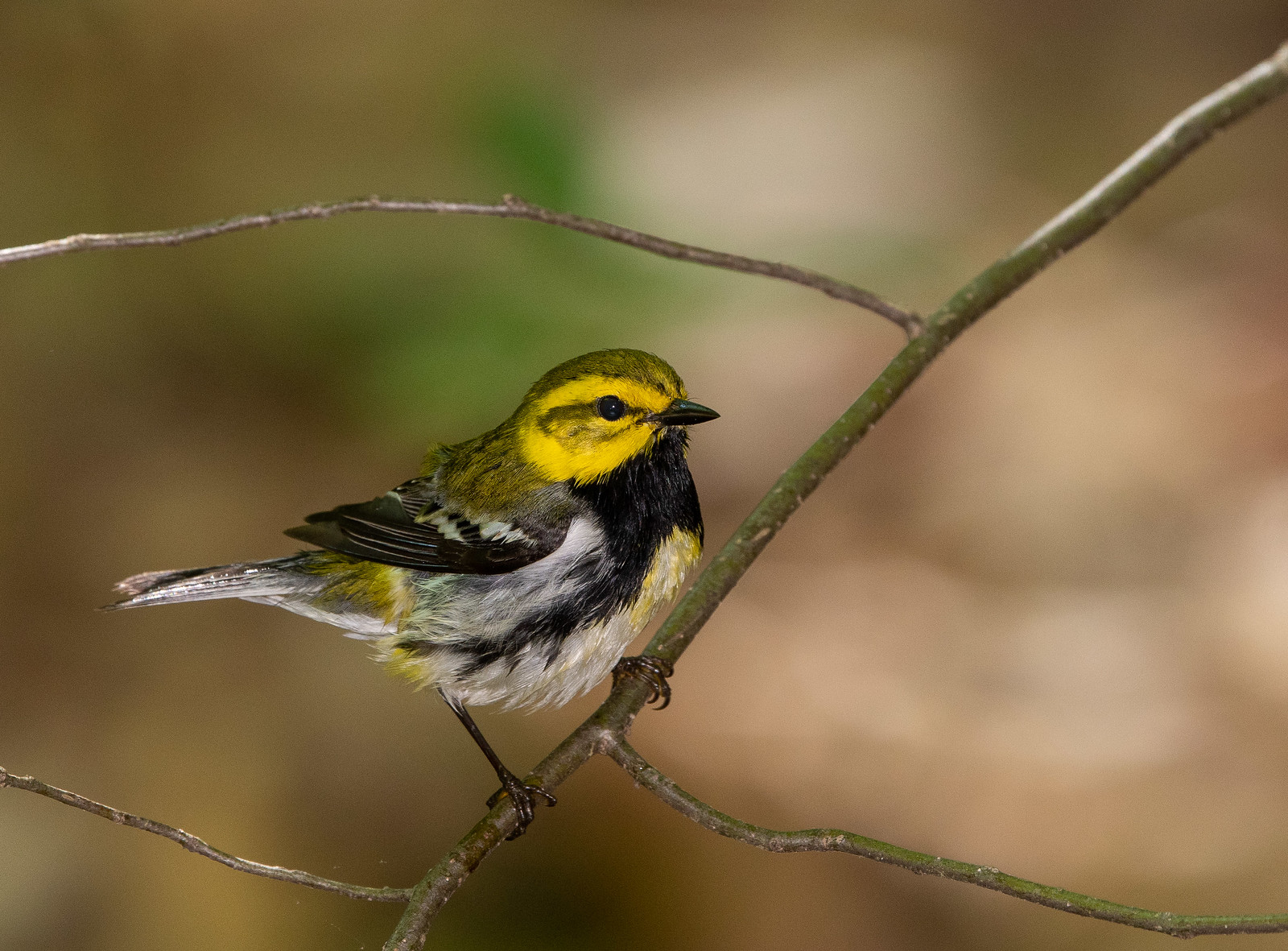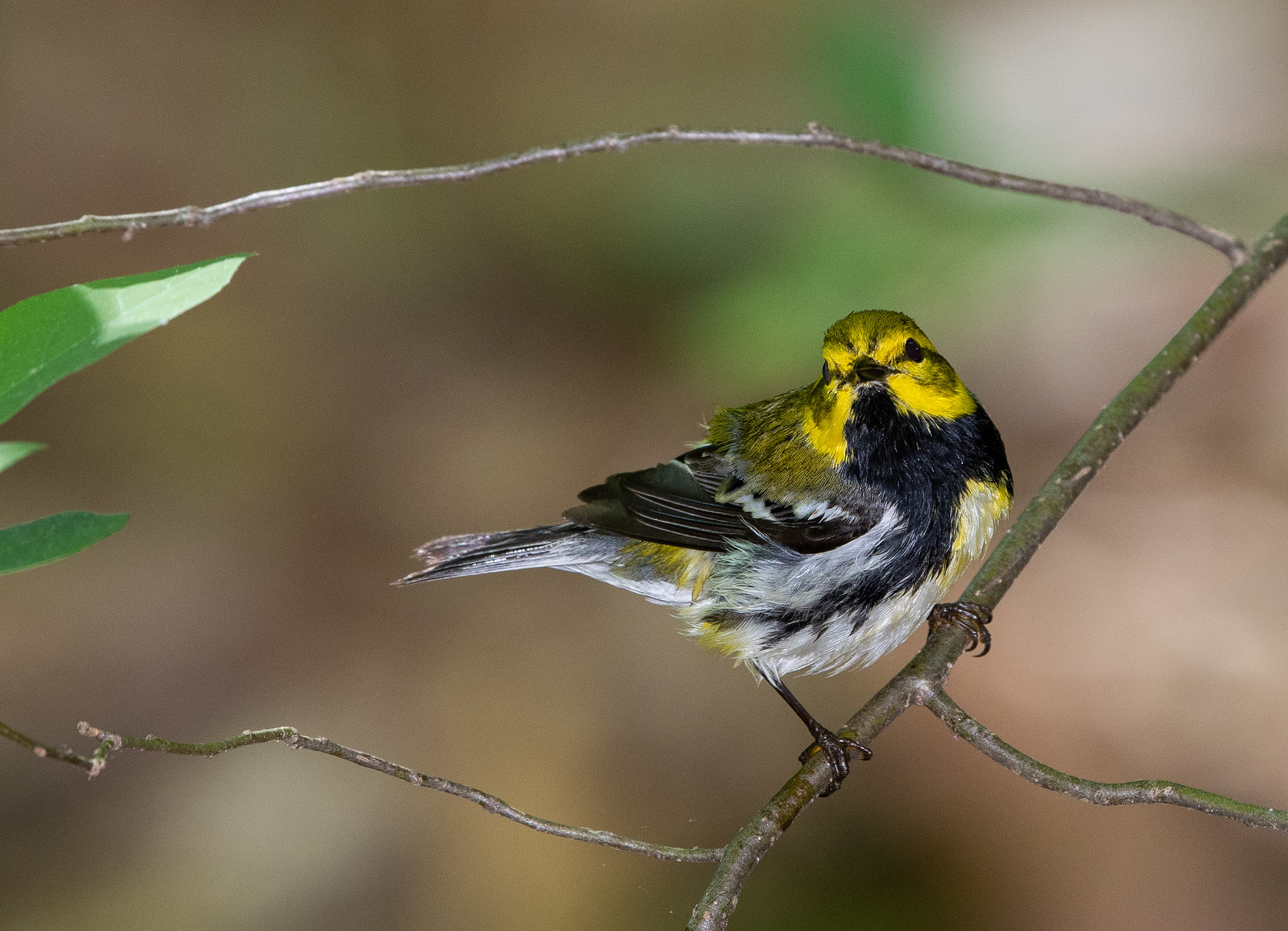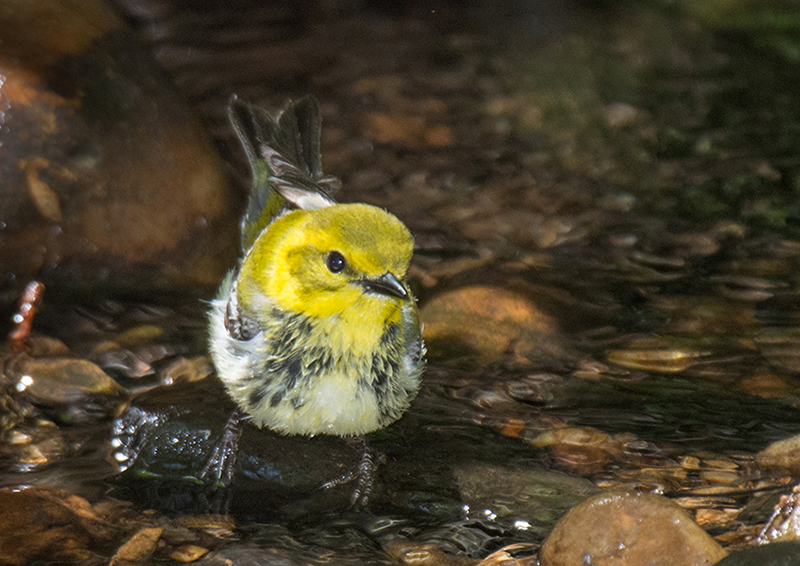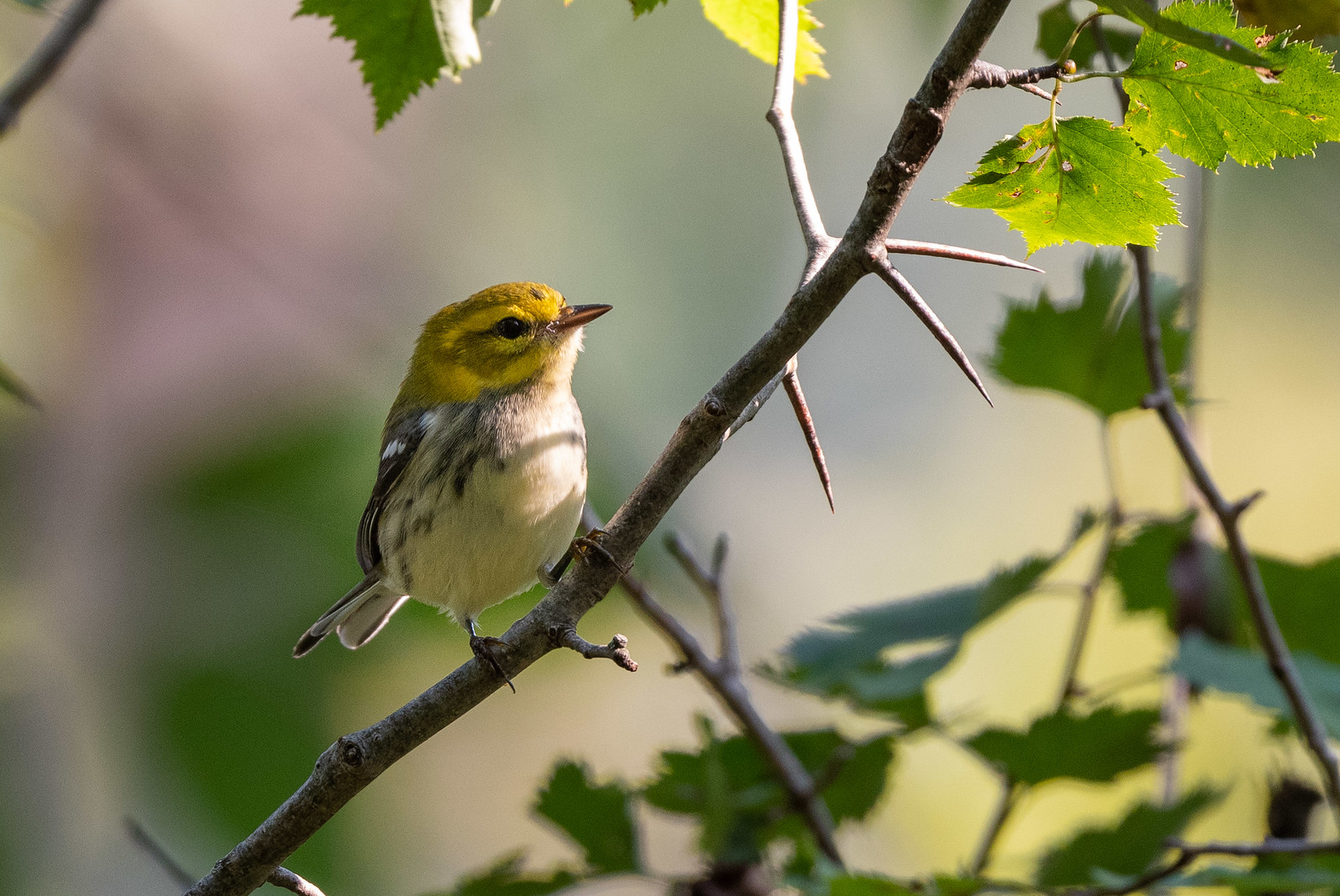| Early Spring Date: | April 18 |
| Late Spring Date: | May 29 |
| Best Dates to See in Spring: | April 25 - May 22 |
Spring: Black-throated Green Warblers are relatively common at Monticello Park, but in some years, they can be difficult to find. They usually arrive early in the spring, and your best chance to see one is during the first two weeks of May. Most of them breed in Canada, the northern United States, and the Appalachian Mountains. Some breed in the coastal plain of Virginia.
Fall: In the fall, Black-throated Green Warblers begin to arrive at Monticello around early September. They are not common, and the best chance to see one is during the final week in September and the first two weeks in October.
Where to See Them in the Park
Black-throated Green Warblers forage in the mid-story and higher. They are active singers, and you often can hear them without seeing one. When they go to the stream to bathe or drink, they tend not to stay long.
Physical Description


Adult male Black-throated Green Warblers are aptly named. They have an olive-green head and back with no streaking, and they have black on the throat which extends down their sides. The face is yellow, with an olive ear patch. The dark wings have two white wingbars.

Females do not have nearly as much black on the throat. The black looks patchy and streaked rather than solid. The amount of black on the throat can vary, which is why determining the sex of a Black-throated Green can be tricky.

Fall: Adult fall males look similar to spring adults, but their black throat and breast feathers have light tips. Fall adult females and first-year males have a mostly black throat tinged with white. Fall first-year females have no black on the throat.
Vocalizations
Black-throated Green Warblers are persistent singers who have two distinct types of song. Their typical daytime song is zee-zee-zee-zoo-zee. Their dawn or aggressive (alternate) song sounds like trees-trees-murmuring-trees. The second song is burrier. Many warbler species sing different songs depending upon the circumstances.
Hear the vocalizations of the Black-throated Green Warbler.Notes
The wayneii subspecies of the Black-throated Green Warbler is smaller than the subspecies of Black-throated Green Warbler typically seen at Monticello Park; it breeds in the coastal plain of Virginia and the Carolinas. The field of taxonomy, which classifies life forms, uses some categories that have subtle differences. A subspecies is a group that has characteristics different from other members of the species, but not so different to warrant being called a separate species. Subspecies is often used as a broader term than race, which generally denotes a group that has been isolated geographically. However, the two terms are usually used interchangeably.
Origin of Names
Common Names: Black-throated Green from the plumage. The New World Warblers were named for their similar appearance to European warblers, to whom they are not related. Most of the New World warblers do not warble (sing continuously with notes that change frequently).
Genus Name: Setophaga means moth eating.
Species Name: Virens means growing green.
Black-throated Green Warbler video footage
Return to the Index
